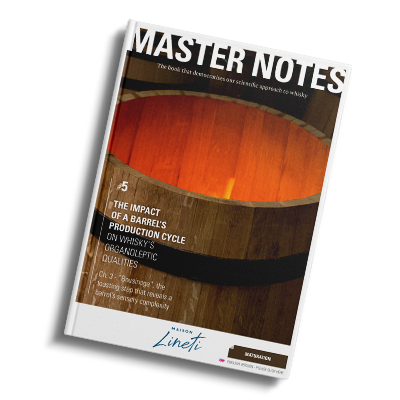Aromatic toasting
Whilst stave bending is only a mechanical process, toasting provides a significant organoleptic benefit to the whiskies. Through the thermal degradation of wood polymers, the wood’s molecular composition is modified, leading to the generation and release of new aromatic compounds.
Several types of aromatic toasting
Several types of toasting are used by cooperages. They are determined according to the height and intensity of the flame, the toasting duration and the quantity of water vaporised on the outside of the barrel. The result is a specific chemical profile for each type of toasting, that will therefore influence the organoleptic properties of the aged whiskies.







